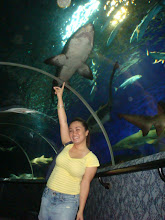DESCRIPTION
Ø The most common causes of which are
nose picking and injury
ETIOLOGY
Ø Epistaxis may be spontaneous or may
result from trauma (usually nose picking)
Ø It also may be be associated with chemical
irritation, acute or chronic infection (such as
rhinitis or sinusitis), purpura, leukemia and
other blood dyscrasias, hypertension,
anticoagulant therapy, or deviated septum.
PATHOPHYSIOLOGY
Ø In children, epistaxis usually originated in the
anterior nose and tends to be mild. In adults,
it tends to originate in the posterior nose and
be more severe.
Ø Slight to moderate epistaxis usually causes
no complications; however, severe bleeding
(persisting longer than 10 minutes after
pressure is applied) may cause blood up to
1 L/hr
ASSESSMENT FINDINGS
Ø Clinical manifestation may include:
1. Bleeding through the nares, blood tricking
into the oropharynx
2. Blood in the corner of eyes (through the
lacrimal ducts)
3. Blood in the auditory canal if the tympanic
membrane is perforated
Ø Diagnostic Findings:
1. Nasal inspection with a bright and speculum
may locate the source of bleeding.
2. Artery legation may be required for anterior
posterior packs fail to control epistaxis.
NURSING INTERVENTIONS
Ø Instruct client to minimize activity for
approximately 10 days, such as avoiding
strenuous exercises, not blowing the nose;
sneezing with the mouth open; and not
lifting; stooping, or straining.
TREATMENT MODALITIES
Important step to prevent nosebleed include:
Ø Avoiding picking the nose
Ø Bleeding usually can be controlled at home by
pinching the sides of the nose together for 5 to
10 minutes
Ø Icepacks to the nose
Ø Putting wads of tissue paper in the nostrils
Ø And placing the head in various position are not
effective
NURSING MANAGEMENT
Ø Interventions to control bleeding, as follow:
1. Instruct patient to sit upright, breathe through
the mouth, and refrain from talking.
2. Instruct patient to compress the soft outer
portion of the nares against the septum for 5
to 10 minutes.
3. Instruct patient to avoid nose blowing during
or after the episode.
METHODS OF PREVENTION
Ø If pressure does not control bleeding, insert
anterior packing or posterior pack as
appropriate. Keep scissors and hemostat on
hand to cut the string and remove the
packing in the event of airway obstruction.
Ø Monitor bleeding: inspect for blood trickling into the posterior pharynx; observe for hemoptysis, hematemesis.
Ø Frequent swallowing or belching; instruct the patient not to swallow but to spit out any blood.
Ø If indicated, provide information regarding electrocautery.


No comments:
Post a Comment